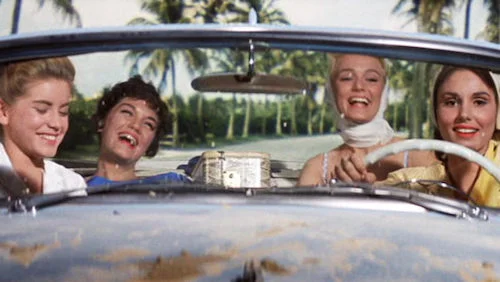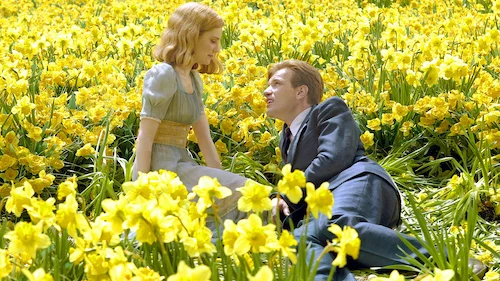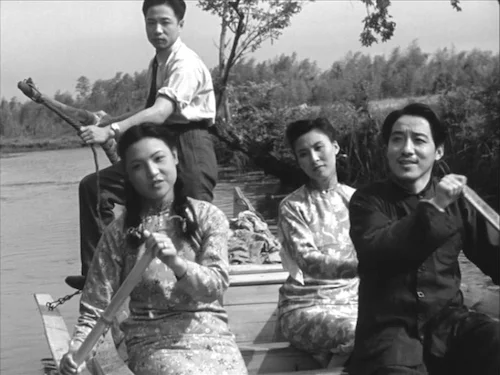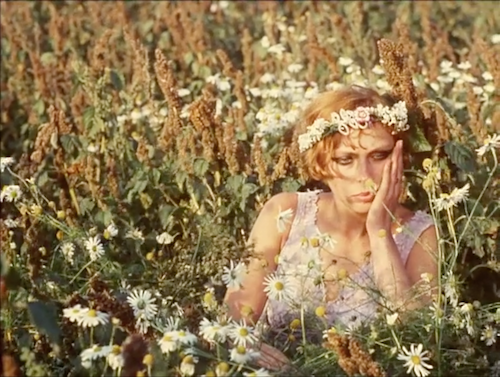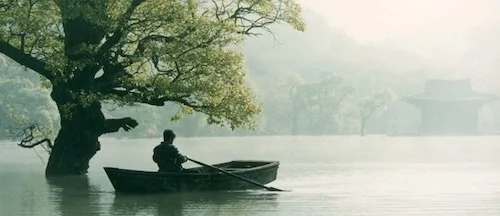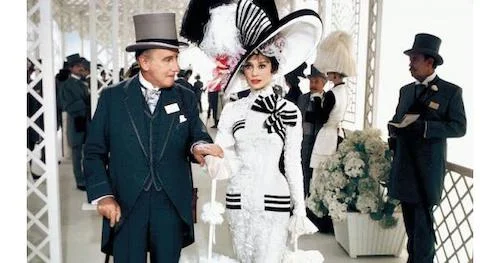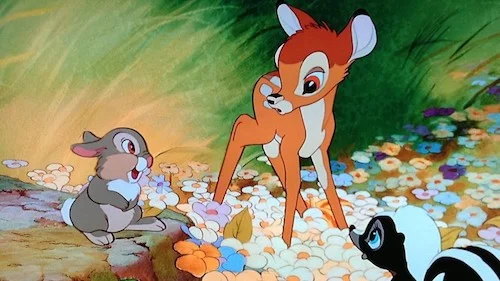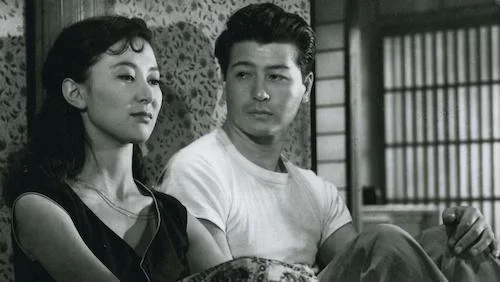Ten Films To Usher In The Spring Season
Two months ago, we celebrated the coldness of winter, and chose empathetic films to freeze in our sorrows with. Now, spring is officially around the corner. You may look outside and see the dreariness of a winter-experiencing country may have: mud, slush, patches of snow, and grey skies. We might start seeing flowers blooming sooner than we expect. Either way, why should we wait? Why can’t we celebrate spring right this second? I won’t lie. Compiling this list was a bit trickier than I expected. It seems like filmmakers love to showcase blistering summers, cynical winters, and decaying autumns more than they like to really dive into spring. In fact, spring is often used as a small metaphor for positive change, but you won’t find many films that fully exist in springtime and project the fact that they are about that season. Nonetheless, we tried our best here, and we think our best was still decent enough. Here are ten films to usher in the spring season.
10. Blue Velvet
So this is obviously a very debatable film. However, David Lynch uses floral images to bookcase Jeffrey’s existence in this film. We begin with bright, blood-red roses creeping up an American Dream picket fence. We eventually see flowers blooming again to resemble rebirth. Plus, the end-of-year dances are coming, so that means the school season must be wrapping up. Families are out watering their gardens, and there is a stillness in the air. Besides, the entire film is about maturation: the very essence of what springtime is.
9. Where the Boys Are
We had to include at least one film about spring break (and we tried to not go the obvious route with Springbreakers); why not include this coming-of-age film? It’s an important work as well, since it was one of the first films geared towards teenagers to fully explore sexual evolution and the challenges young adults find during their discovery years. With spring, comes the chance to change, and Where the Boys Are embraces what the future brings with full force.
8. Big Fish
Technically, much of this film takes place in other seasons (can we forget how much of it is an autumnal story?). However, it’s all in the family name: Bloom. Edward Bloom recounts his life in the most over-extravagant ways, to show the world how much his life has meant to him in his own way. We to get to relish in the beauties of spring time as a result: we embrace the summer, and yearn for the spring when fall hits. Big Fish utilizes flowers as a strong enough symbol that you cannot help but notice them.
7. Spring in a Small Town
The history of Fei Mu’s masterpiece is a little bit ironic in the most unfortunate sense. The film details a family that is heavily contrasted by the nature around them. Their building is in shambles, and their wellbeing is tampered after the Second Sino-Japanese War. This film doesn’t deal with growth as much as it is about getting by, but the nature surrounding the leading family. The film was released at an inconvenient time, when the rise of Communism got in the way of its own growth. Not to worry; decades later, Spring in a Small Town is now deemed a classic.
6. Daisies
Another film listed here that does not explicitly take place during spring, it is still hard to neglect what Daisies can bring to the season, though. This feminist opus obviously uses the titular flower in many instances: fields, crowns, displays, and more. Let’s not forget the use of pastel colours galore, that helps instil the soothing feeling of this time of year; all of those Easter colours, and vegetational hues! This would be a very different spring time film, but that doesn’t make it any less of one.
5. Easter Parade
Finally, we have a blatant example that isn’t buoyed by my stretches of interpretations. Easter Parade is a timely musical with the always-welcome presences of Judy Garland and Fred Astaire. There’s the theme of shifting tides (trying to win the attention of one suitor by making them jealous with another, only to realize where your love was all along), which is very appropriate. There are the memorable numbers. The joy. The happiness. We had to include at least one musical here; the genre is like the spring of cinematic styles.
4. Spring, Summer, Fall, Winter… and Spring
Once again, we go through more than one season here. The difference is the importance that spring makes to this particular film. The title alone celebrates the coming of this very season once again, after a year of constant development and hardship. This philosophy gets taken to a whole new level in Kim Ki-duk’s greatest work, with the inclusion of Buddhist ideologies. A lifetime is captured within the five seasons, and youth is as celebrated as full maturation is.
3. My Fair Lady
Yet another non-specifically-spring title, but how could we not include this? The very first thing you see is floral images during the overture. Eliza Doolittle is a flower girl that is the subject of a debate: can an improper, brash lower class citizen be turned into a convincing member of the socialite-based elite? Doolittle herself blossoms through her changing wardrobes, as her diction evolves and her mannerisms get refined. From flower girl to flower. Her realization of self worth (that came from herself, not from those that exploited her) is like the full effect of spring time, that causes a stir in the air and a change in everyone’s moods (even the cynical Henry Higgins, that tried to make her his own experiment).
2. Bambi
This is an obvious pick. The titular deer experiences the worst moments of his life during the cold winter. Spring comes around, and Bambi learns to evolve on his own. Spring comes around again during the end in full effect. The animators certainly knew how to illustrate these seasons well, with the red hot fires of summer and the greyish blues of winter. For spring, we get the film’s most colourful and magical moments. It is nearly impossible to not feel joy during these moments.
1. Late Spring/Early Spring
We end off sneakily with a two-for-one by the brilliant Japanese filmmaker Yasujirō Ozu. The first film Late Spring deals with a flower wishing to blossom at her own pace: a woman being forced to marry , despite her wishes to stay at home and take care of her lonely father. With Ozu’s stunning direction, you truly get the sense of claustrophobia within the condensed houses, compared to the open landscapes of the great outdoors. With Early Spring, a married couple gets stale, and the husband tries to find love in others. Oddly enough, the empty spaces become haunting in this film, where as crowded scenes are ones that make you feel welcome and loved. These are two different films with separate takes on love, in accordance to the spring time. Is it too late to change? Is it too early to explore? Ozu — the master of making the barest tales of humanity fascinating — turns all of it into a pair of breathtaking films. They might make up for a great weekend marathon to bring in the new season of change.
Andreas Babiolakis has a Masters degree in Film and Photography Preservation and Collections management from Ryerson University, as well as a Bachelors degree in Cinema Studies from York University. His favourite times of year are the Criterion Collection flash sales and the annual Toronto International Film Festival.



